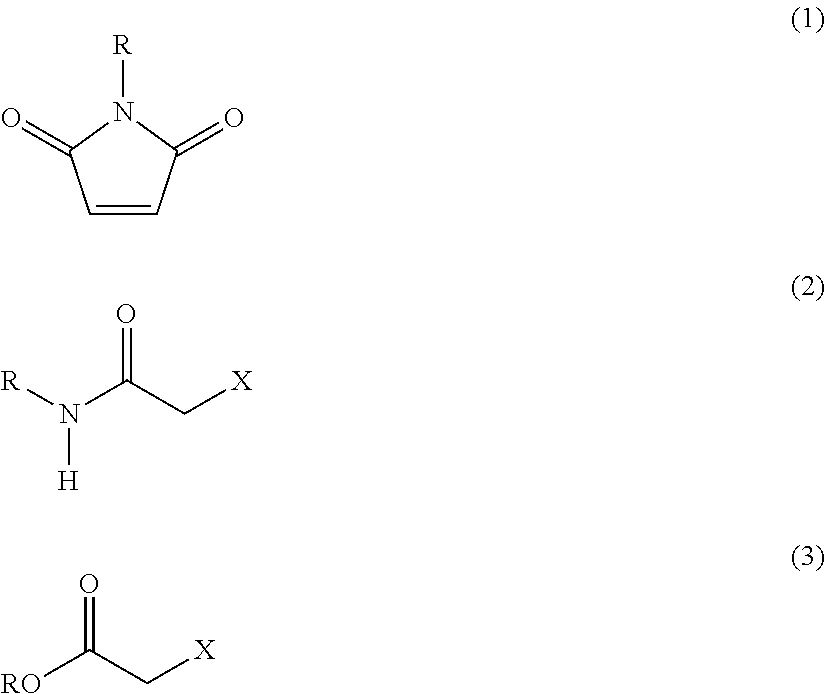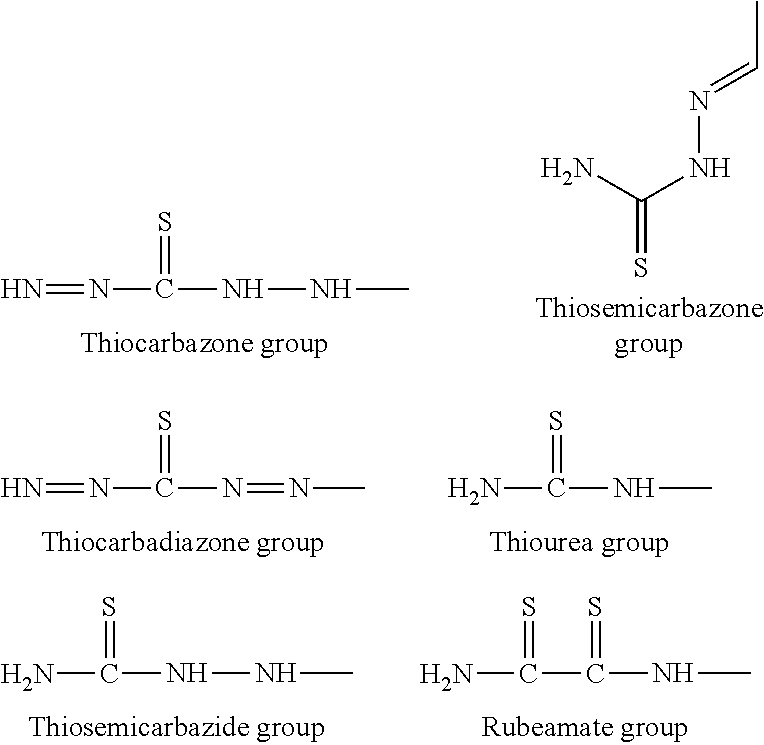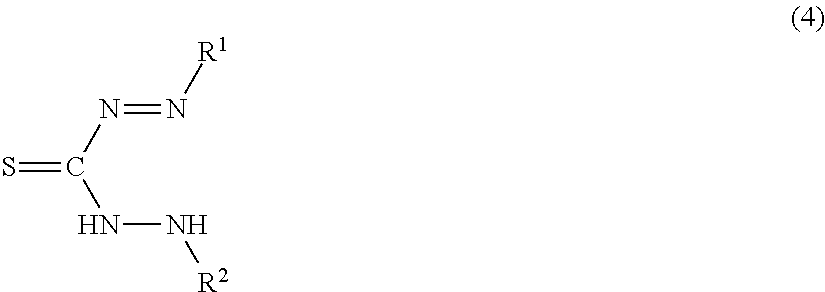Method of recovering heavy metal and reagent for recovery of heavy metal for use in the same
a technology reagents, which is applied in the field of recovering heavy metals and reagents for recovering heavy metals, can solve the problems of insufficient reliability of results obtained, adverse effects on health, etc., and achieves superior reliability, suppressed variability of recovery rates among samples, and improved recovery rates
- Summary
- Abstract
- Description
- Claims
- Application Information
AI Technical Summary
Benefits of technology
Problems solved by technology
Method used
Image
Examples
first embodiment
(1) First Embodiment
[0056]The method according to the first embodiment is an example of recovering a heavy metal in an aqueous solvent using a chelating agent represented by the structural formula (4).
[0057]In the method according to the present embodiment, the step of forming a complex includes the following step (1A), and the step of recovering the heavy metal includes the following steps (1B) and (1C).
[0058](1A) a step of forming a complex between a heavy metal being in a sample and a chelating agent in the presence of a masking agent in a mixture prepared by mixing the sample and the chelating agent under pH conditions where the chelating agent is insoluble in an aqueous solvent
[0059](1B) a step of recovering the complex from the mixture
[0060](1C) a step of dissolving the recovered complex in an aqueous medium under alkaline conditions in order to recover a heavy metal
[0061]According to the present embodiment, a heavy metal can be recovered easily utilizing the difference in sol...
second embodiment
(2) Second Embodiment
[0111]The method according to the second embodiment is an example of recovering a heavy metal by an aqueous medium using chelating agents represented by the structural formulae (4) and (5). The second embodiment can be described with reference to the description of the first embodiment unless otherwise shown.
[0112]In the present embodiment, the chelating agent represented by the structural formula (4) is referred to as a first chelating agent, and the chelating agent represented by the structural formula (5) is referred to as a second chelating agent.
[0113]
[0114]The second chelating agent represented by the structural formula (5) is meso-2,3-dimercapto succinic acid (DMSA). Hereinafter, the second chelating agent is also referred to as DMSA.
[0115]In the method according to the present embodiment, the step of forming a complex includes the following step (2A), and the step of recovering the heavy metal includes the following steps (2B) to (2D).
[0116](2A) a step o...
third embodiment
(3) Third Embodiment
[0153]The third embodiment is an example of recovering a heavy metal by an aqueous medium using a chelating agent represented by the following structural formula (6) as a second chelating agent. The present embodiment can be described with reference to the description on the second embodiment unless otherwise shown.
[0154]
[0155]In the structural formula (6), R3 represents an alkyl group or an aminoalkyl group with a carbon number of 1 or 2 or is not present, and Y represents,
[0156]
[0157]Examples of the second chelating agent include thiopronine (N-(2-mercaptopropionyl)glycine) represented by the following structural formula (6-1), DMPS (1,2-dimercapto-1-propanesulfonic acid sodium salt) represented by the following structural formula (6-2), and cysteine (2-amino-3-sulfanylpropionic acid) represented by the following structural formula (6-3). The second chelating agent may be, for example, any of hydrates of compounds having the structural formula (6). The second c...
PUM
| Property | Measurement | Unit |
|---|---|---|
| concentration | aaaaa | aaaaa |
| concentration | aaaaa | aaaaa |
| concentration | aaaaa | aaaaa |
Abstract
Description
Claims
Application Information
 Login to View More
Login to View More - R&D
- Intellectual Property
- Life Sciences
- Materials
- Tech Scout
- Unparalleled Data Quality
- Higher Quality Content
- 60% Fewer Hallucinations
Browse by: Latest US Patents, China's latest patents, Technical Efficacy Thesaurus, Application Domain, Technology Topic, Popular Technical Reports.
© 2025 PatSnap. All rights reserved.Legal|Privacy policy|Modern Slavery Act Transparency Statement|Sitemap|About US| Contact US: help@patsnap.com



